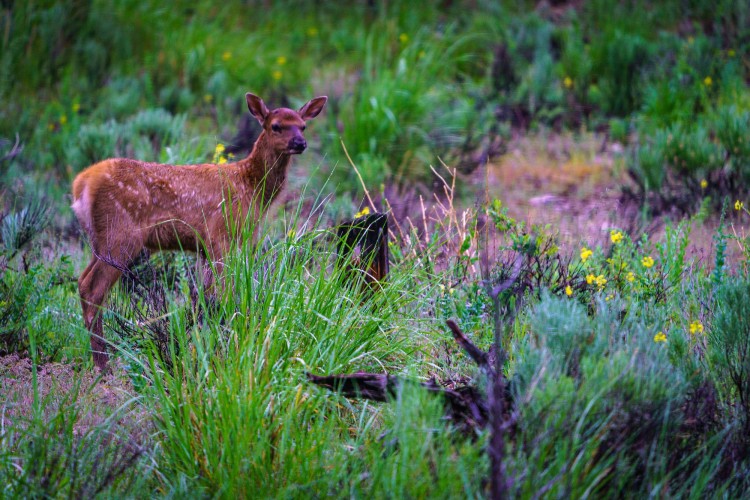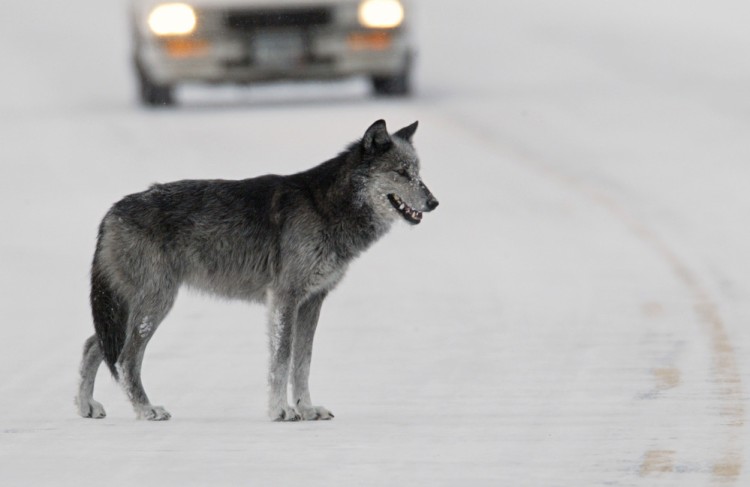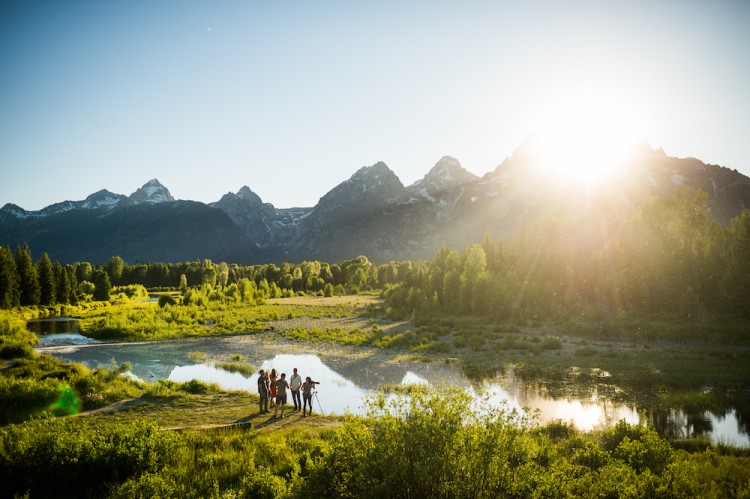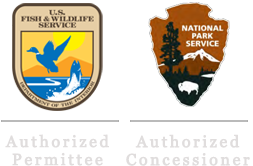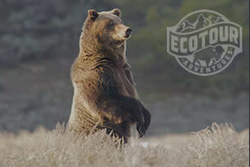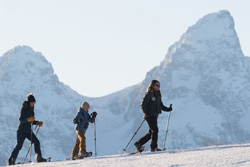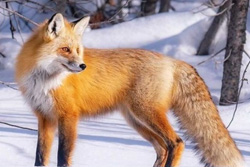Explore Fall in Grand Teton and Yellowstone National Parks!
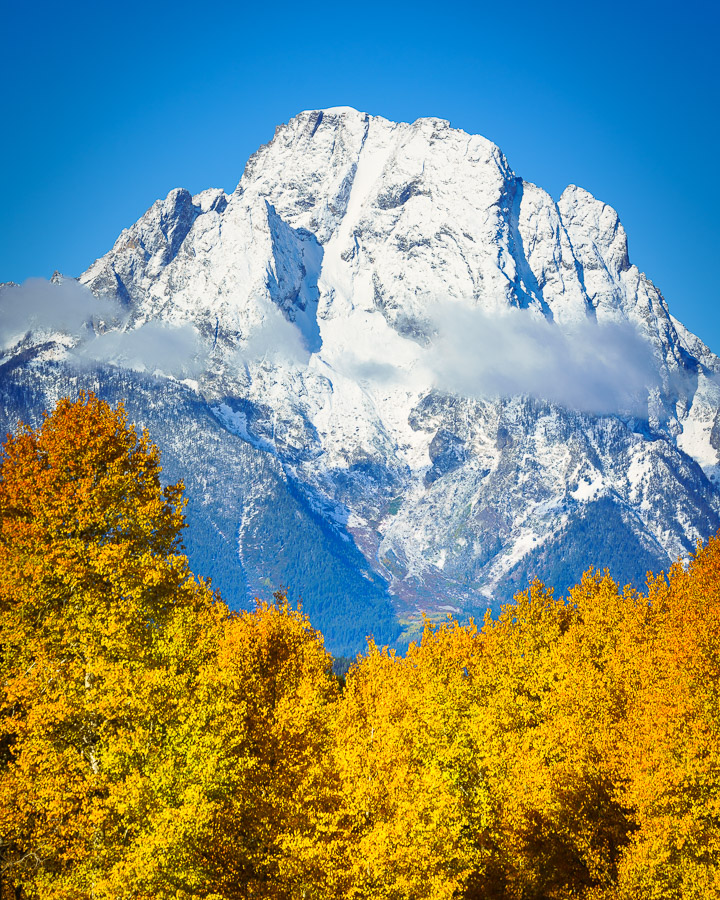

Fall at Oxbow Bend in Grand Teton National Park
There is a crispness in the air today Jackson Hole. Mornings are cold and leaves are starting to change. It begins with fireweed flowers and smaller shrubs, before peaking with aspens and cottonwoods, our two major deciduous trees species. The fall has always been a special time to me, with fond memories of still evenings listening for the bugling of elk beneath golden aspen groves. Right now there is something for everyone in Grand Teton and Yellowstone National Parks, from rutting elk to active black and grizzly bears preparing for hibernation.
Fall Foliage
Are you a leaf peeper? If you like gazing at and photographing fall foliage you just might be! It’s an informal name for folks who travel to observe the changing of fall colors. Here in Jackson Hole, fall colors astound, beginning first at higher elevations and then coursing downstream, following cottonwood groves along the Snake River. Grand Teton National Park has countless photography locations to capture the sights.
What is happening in fall anyway? Plants contain a green colored pigment called chlorophyll which is responsible for photosynthesis, the process which converts sunlight to sugars. As days shorten plant leaves slow down the production of chlorophyll which allows other pigments, called carotenoids, to become visible. The stunning reds, oranges, and yellows we see in fall have been present all along! Read more about the Science of Fall Foliage Here!
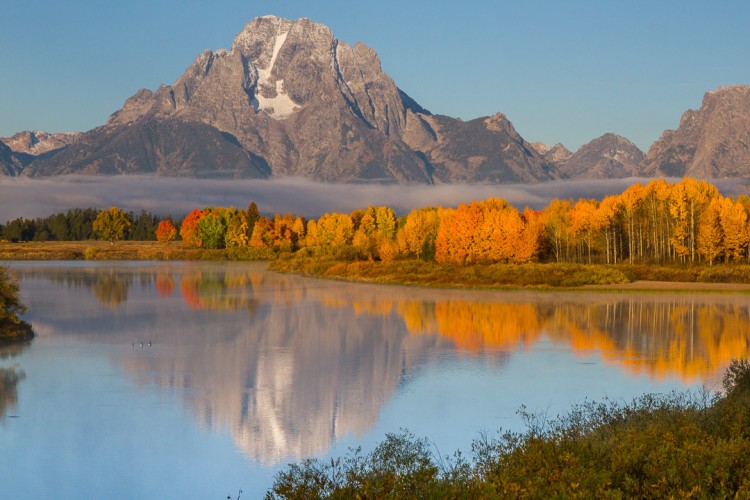
Fall at Oxbow Bend, Grand Teton National Park
Deciduous plants drop their leaves to save energy in winter when they would be otherwise unable to photosynthesize due to freezing temperatures. With out liquid water the chemical reaction cannot occur. In stark contrast to aspens and cottonwoods, our pine, spruce, and fir trees are known as evergreens, appearing to never lose leaves. (they are constantly dropping needles, just not all at once!) Evergreens produce sturdy needles which can resist winters chill, this allows them to begin photosynthesis as soon as water is once again available in the spring. Two unique strategies for surviving in the Greater Yellowstone Ecosystem.
Sparring Bull Elk, the Rut!
When aspen leaves begin to yellow, it is a sure sign the rut has, or is about to start. Sit quietly beneath one of these trees at dawn and you may hear an eerie sound echo across the forest. It’s a bugle, a loud scream large bull elk make to proclaim their dominance for mating rights. One of North America’s most spectacular wildlife behaviors, bull elk will call back and forth, issuing challenges. If you are lucky the next bugle you hear may be close enough to see the performers meet. They will stand tall, broadside to each other. Breathing heavily, water vapor will form in the frosty air. If one does not retreat the two will bow antlers and then lock them together, wrestling back and forth until one gives up and flees. The victor may often attempt to gore the loser while in pursuit.
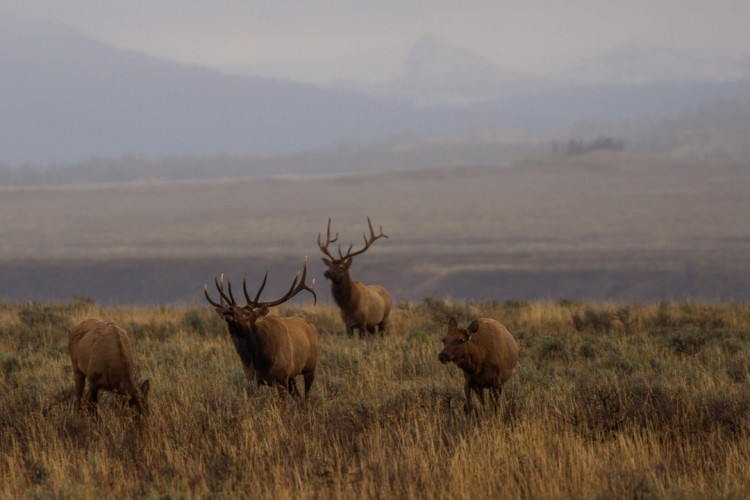
A bull elk bugles during the Fall Rut, Grand Teton National Park
All of our ungulates, or hoofed mammals, mate in fall so that their offspring will be born in spring. And elk aren’t the only ones to aggressively establish dominance; moose, deer, pronghorn, and bison will also be in rut this fall, a unique spectacle to experience beneath the shadow of the Tetons.
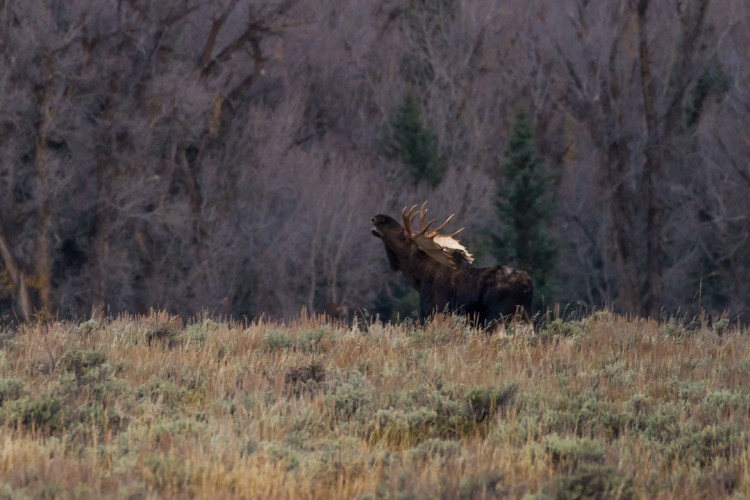
Rutting Bull Moose observed on a wildlife tour of Grand Teton National Park.
Preparing for Hibernation
Animals use three primary strategies to survive in the Greater Yellowstone Ecosystem, Adapt, Migrate, or Hibernate. One of our most popular animals to see, bears, are experts at the third. Throughout the summer bears build up fat reserves, preparing for winter. As omnivores, they will eat just about everything, grasses, roots, berries, elk calves, carrion, ants, and even moths roosting in high elevation boulder fields! Towards the end of summer foraging picks up, entering a stage called Hyperphagia or over eating. Foraging constantly, bears will eat upwards of 20,000 calories a day! Right now in Grand Teton National Park much of this calorie budget is coming from the berries of the hawthorn, a thorny bush often found near water.
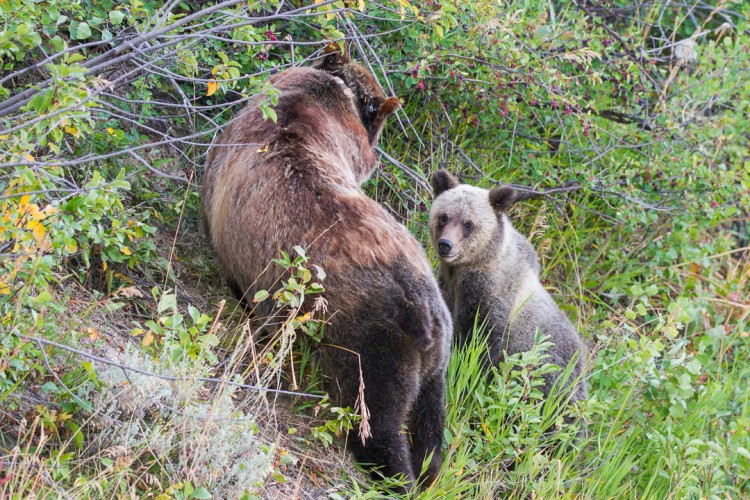
A Grizzly Sow and Cubs feed on serviceberry during a Grand Teton Wildlife Safari.
Transitioning to Winter
Fall is a transitional time, with our over 1000 plant species shutting down photosynthesis, in preparation for the long winter. Many drop their colored leaves or die back to the ground where insulated snow cover protects the living roots. Our rutting mammals complete the mating season and begin migrations out of high elevations to more protected valley floors, often concentrating in huge numbers such as elk on the National Elk Refuge. As two thirds of our bird species leave the valley for warmer climates and bears disappear to hibernate, we welcome new arrivals to winter in Jackson Hole. Raptors like the Rough Legged Hawk will soon arrive from the Arctic Circle, and mighty bighorn sheep will return from the rugged Gros Ventre Mountains, beginning their late fall rut just outside the town of Jackson.
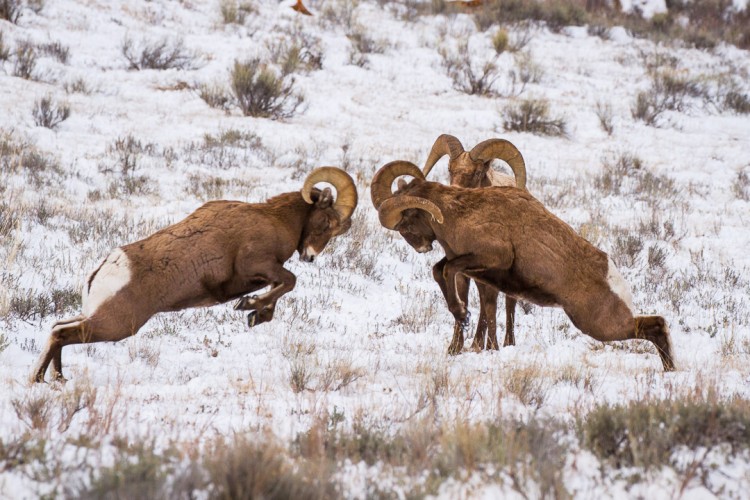
Bighorn Sheep Butt Heads in early December on the National Elk Refuge near Jackson, WY.
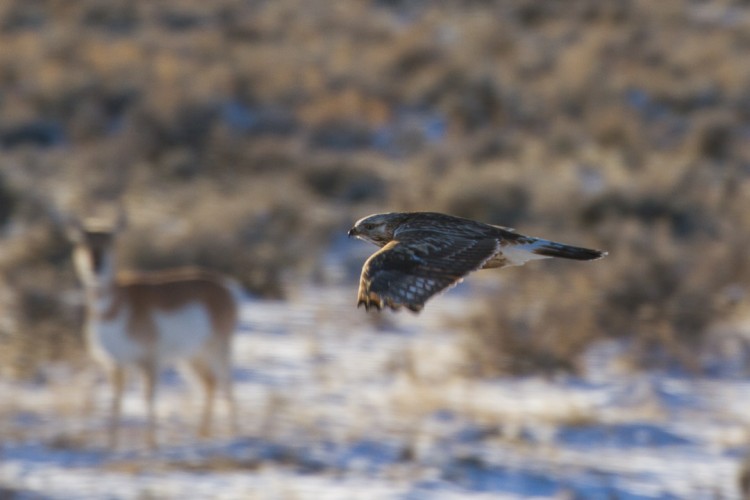
Rough Legged Hawks Migrate through the Jackson Hole Valley in Winter from the Arctic Circle!
The magic of fall in the west is something I was introduced to as a young child growing up near Rocky Mountain National Park. Let the experienced guides at Jackson Hole Ecotour Adventures share this story when you visit Grand Teton and Yellowstone National Parks this fall. Join us on a half day, full day, or multi day trip through fall in the Greater Yellowstone Ecosystem, it’s one you wont soon forget. Click the Book Now! Button at the top of the website or give us a call at (307) 690-9533 to book. We hope to see you soon!
Guide Josh Metten has spent his entire life exploring and living in the Rocky Mountains of Colorado and Wyoming. He is an Ecotour Adventures Naturalist, photographer, conservationist, and outdoor enthusiast. Josh lives in Jackson, WY.





